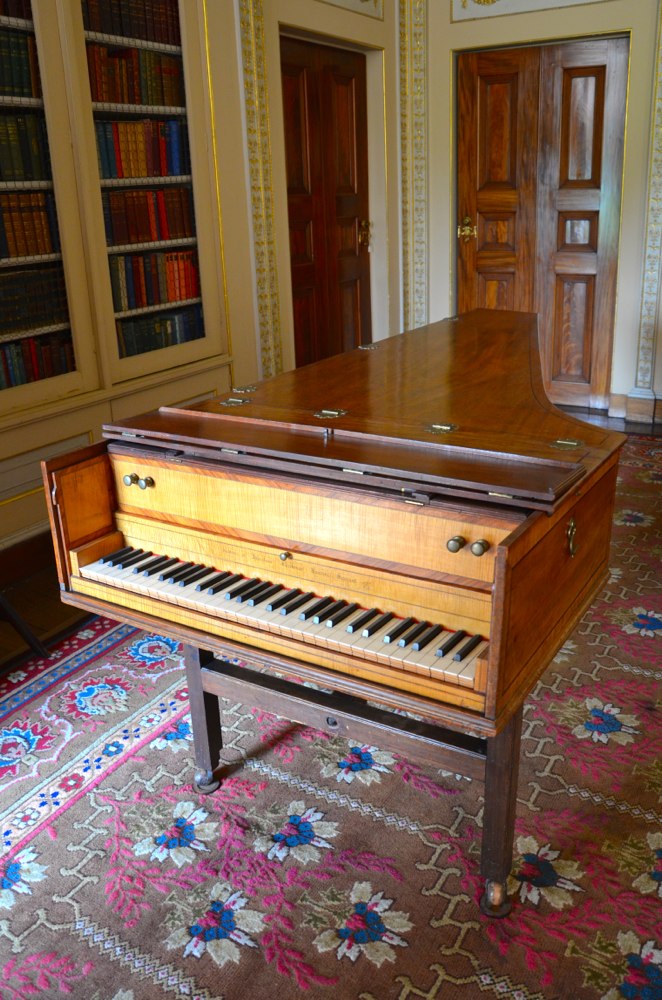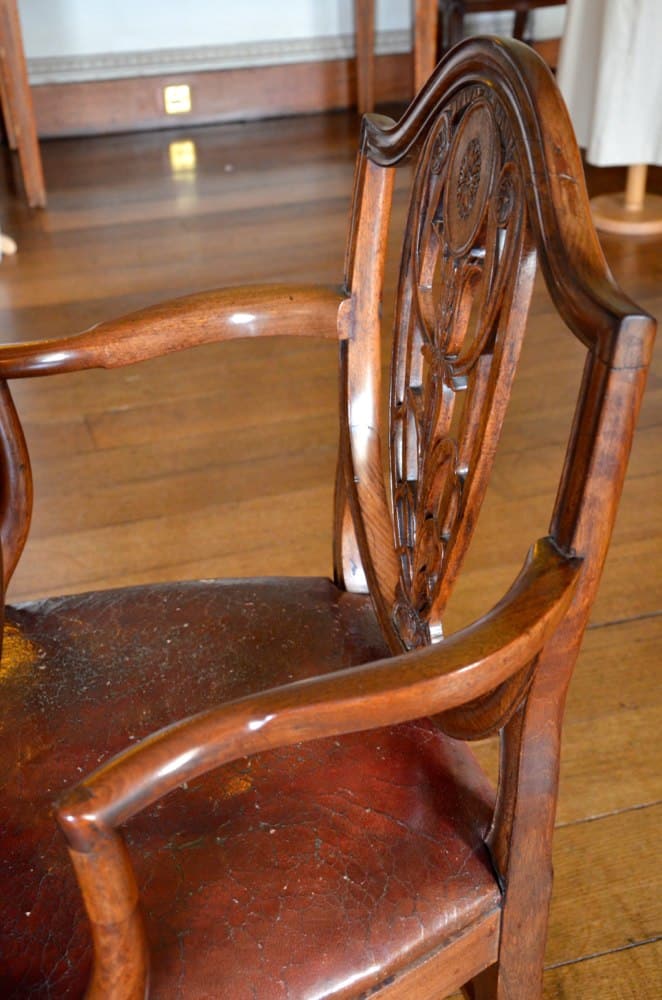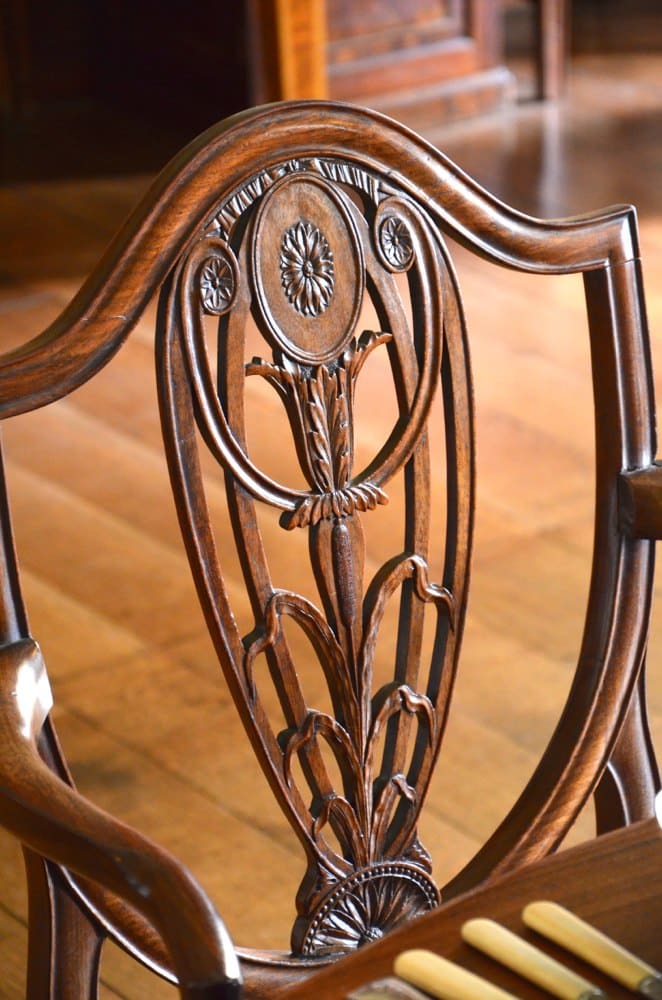How is Your Woodworking Going?
Many emails arrive every day telling how life-changing woodworking has become for them since they adopted hand tool methods for working wood. In the blog beginning I never thought that this would become the vehicle through which I could share my life as a working craftsman but indeed it has.
When I want inspiration myself I go to one of the National Trust’s properties of which there are hundreds all supported by friends of the Trust, legacies, overseas supporters as members of its US -based Royal Oak and a 2.7million UK membership all of whom feel they own a piece of the Trust as a whole.
These are pictures I took today when I visited Berrington Hall a hundred miles from where I live. They have an exhibition of clothes used in the Pride and Prejudice film by the BBC a few short years back. Here is the link to the hall.

I’m never disappointed and as I prepare for the coming year and all that that holds by way of a new work I find myself drawing on my predecessor designers to try to step outside the realms of ordinary as they did in their day as unique designers of 200 years ago.

This harpsichord made by ‘Jacobus et Abraham Kirckman Londini Fecerunt 1787’ is beautifully appointed with diagonal cross banding, ebony and boxwood herringbone inlay and figured sycamore veneered panels capture the essence of accurate handwork to enhance and compliment the beauty of the different woods. I love compositions like this where the maker combine the skills of instrument making with woodworking and his work becomes totally absorbed in the whole.
The harpsichord was an early keyboard instrument popularised throughout the 15-18th centuries until the piano replaced it with strings that could give depth and feeling to each note. The harpsichord was at its peak in the 18th century and English instruments like this mark the pinnacle period of harpsichord design. The ‘key’ difference between the piano and the harpsichord is in the actual note produced by the two very different methods. The harpsichord keys pluck the strings in like manner to plucking a harp but denying the flexing intonation given to a harp. The piano has a far larger range of notes and become ever popular because intonation and feeling can be fully expressed by the player. Dare I say it, the harp’s tone can be somewhat monotonous by comparison and the notes cannot be varied like the notes of the piano. Also it has fewer keys than the piano. Perhaps they should not be judged as apples for apples because they are really very different instruments that look the same.
I was struck (no pun) by the care of all corresponding components forming the main body and then the minute details that are all to easy to miss. I stood and watched maybe fifty visitors walk past the instrument to see if they noticed the workmanship and not one of them gave more than a cursory glance in its general direction.
The different woodwork manorial homes are furnished with is about as massively diverse as it can get. Hepplewhite, Sheraton and Adam may well be well known, but then there is the work of the unknown man behind those many thousands upon thousands of millions of pieces.
Imagine a man losing his whole being as the coves and curves and chipped pieces rolled from the gouges to the bench. To the Lord and Lady the pieces were decorating their lives with refinement and texture. To the man making, the work was feeding his wife and children and paying the rent on his modest home.
Imagine how many weeks and months it took to shape and mould and inlay and veneer the lives of the wealthy and opulent. I’m glad the standard was set in the 16-1700’s; before the machine overtook us. It’s not a question of stopping progress but more a one of looking back and learning, researching, mastering, dedicating, committing and such like that. All of this helps me to see that we can restore the same standards of workmanship and keep woodworking a living way forward into a new and vibrant future.; a future mirroring the workmanship we need to master once more but this time we can do it live in our own homes and not to former designs but those we design into our own lives.
I look at these pieces and would have no problem making any of them. I wouldn’t want them in my home. They pretend too much for me. But I do like the thought that I can make them. 








Paul, I too have spent many present hours wandering around National Trust properties. Although tthe type of pieces you show in your photographs are always a joy to behold, I tend to find the greatest pleasure in looking at what I call the “Charlie Brown” stuff. By this I mean those pieces that are often overlooked and are usually stuffed in a corner out of the way. My wife and I were recently at Polesden Lacey and I saw an old table in the hallway. I was told it had been made in 1730; the more I examined it, the more aware I became of the builder as I started to notice all those little marks made when the joinery was laid out. My wife was puzzled as to why this plain Oak table was so exciting to me but the volunteers for that area were so eased that someone was bothering with this table that I was allowed far more access to it than if it had been one of the “important” pieces. I had a wonderful time chatting to the volunteers there and aim to go back as soon as I can.
P.S. The reason I call these pieces “Charlie Brown” is because they often put me in mind of the Chrstmas Tree; they don’t look like much at first glance but with a little love, you find they have a magic of their own.
Paul, they are indeed beautiful pieces. Quite inspiring with regard to the skill level of the makers, but as you say they pretend to much. I’d much rather possess the skill level than the castle. But to answer your question, my woodworking is going great but has taken a curious twist.
My woodworking was mostly related to a small wooden boat that I’m building.It’s primarily CNC cut from marine ply simply because I have the skills to transfer the design to computer and a friend who owns a CNC router. I was up to needing to do some stern seat framing from 19mm x 19mm pine one night about a month or so ago and realised that it was about 8:30PM and that setting up my cheap compound mitre saw and running trenching cuts in it was going to make me seriously unpopular with the neighbours in our unit complex. While pondering what else I might do I went back to the computer and was trawling around when I came across your blog. After a bit of reading I dragged out a plastic mitre box, an appalling Irwin Tenon saw and an equally appalling set of Irwin chisels. After a bit of work on the 19mm chisel I had the seat framing done in about 15 minutes and glued up to dry overnight.
And a light had switched on !. So I read through some more of your stuff and got to your blogs about power tools excluding kids from the work shop. My grand daughters love to “help” but so far this had been totally limited to brushing epoxy into marine ply. One Saturday while I was doing something else I let my 7 year old grand daughter watch a couple of your video’s. She found the one where you made trees and a spatula and said “grandpa, can we make one for mum?”.
So I sharpened an old Stanley #51 that had belonged to my wife’s grandfather, and cut out a basic spatula shape from some of the hoop pine with my jigsaw ( no coping saw then ) while the kids had lunch. After lunch we used a couple of clamps to clamp it to the bench. We had no vise either at this stage since the bench was built for doing electronics not woodwork. Her 6 year old sister wanted in as well so the three of us set out to make a spatula. The next two hours were probably the most instructive and enjoyable hours I’ve spent in years and the spatuala came out fine.
Suffice it to say that that electronics bench has now been modifed somewhat with another layer of marine ply and some 19mm x 19mm hoop pine edges, now sports a reasonable quick release vise and a coat of Danish oil and is a place where the kids “do stuff”. Better yet my oldest son who always liked wood work but has nowhere to do any has checked it out and will be coming over with our youngest grandson so that Grandma can look after the baby while he sets out to build his son a toy chest.
So progress on the boat has slowed drastically but I now have grandkids that measure things and understand numbers a bit better. A 6 year old who I see closing her eyes and running her fingers over things to feel the texture which is a thing we did when their spatula hadle was getting a bit wonky. And I’ll get to see a lot more of my eldest son and youngest grandson between now and Christmas. I’d say my woodworking is going fantastically well and for that I am much in your debt.
Great story, congratulations on your realization
Ken
What an inspiring piece. In a world where stress and disease rules our lives, everything is at a pace and a cost. Our souls and spirit cry out for something more real and tangible, Just like your granddaughter, we need to feel the texture. Paul is inspiring and encouraging people to get real! See the beauty in the world and to use through our hands a means to express the love and joy through the craft we hone from that feeling inside.
The woodcraft Paul and other teach are one method to bring value back into our lives and to leave behind a legacy that will endure for generations for all to see. To, as many believe living through our children I feel there is a misnomer. We have to pass something on, I think you have discovered something here and the value to you I think is priceless?
I agree we are much in debt to Paul, yet I’m sure he would say he is paying back his debt to those who inspired him.
Paying forward is always more rewarding that paying a debt!
Thank you both.
Paul another great post and Thank you for sharing those lovely pictures. I to am not a big fan of that kind of furniture even though those are no doubt beautiful works of art. I like the more simpler piece’s like shaker style for instance.
Having said that since I have discovered you a couple years or so back now you have been a big inspiration to me as well. I have learned to appreciate and use hand tools probably 99% of the time now and as long as I am physically able will continue to do so. Your Wood Working Master Classes have taught me so much as I am not able to attend any woodworking classes. I can watch and view your classes 24 / 7 in the comfort of my own home.
You have also inspired my ( 2 ) Grandchildren as well, they love to watch your video’s with “Papa” and we are currently building your tool box for my Grandson’s tool’s that I have given him. Now my Granddaughter is wanting to get into this as well and we plane on making some spoons, spatchala’s for Mommy and Grandma for Christmas presents.
I Thank you for this inspiration for me and my “Grandchildren” this is priceless time.
Steve
Paul I’ve written a couple of those letters, still seems like there is no way to compensate you for the amount of gratitude required. I also find these these pieces although marvellous to behold ( considering the time and effort and skill of the craftsman all those many years ago) far from being what I would call functional but more decorative. That was a different time though as you explain above.. I do wonder about the circumstances of their commissioning though the who, what, why and where will be a mystery to me. When I look at my own work i do know that I am getting ‘better’ at joinery, at layout, and everything that is encompassed from what you offer to teach. So to answer your question, my woodworking is getting better thanks to you and WWMC. I hope I can have a small impact on those around me in a small way to not forget the tangible world, in this digital / virtual one.
Brian
Thanks to your teachings my work is improving everyday. I can not thank you enough Paul. It is amazing when you realize that everything was once made entirely by hand. I now find it impossible to pass by a piece of furniture without looking to see how it was made. I go to antique shops all the time looking for pieces that I can copy or salvage and give away. As to resurrect them once again. Giving them life again to be appreciated for the next 200 years.